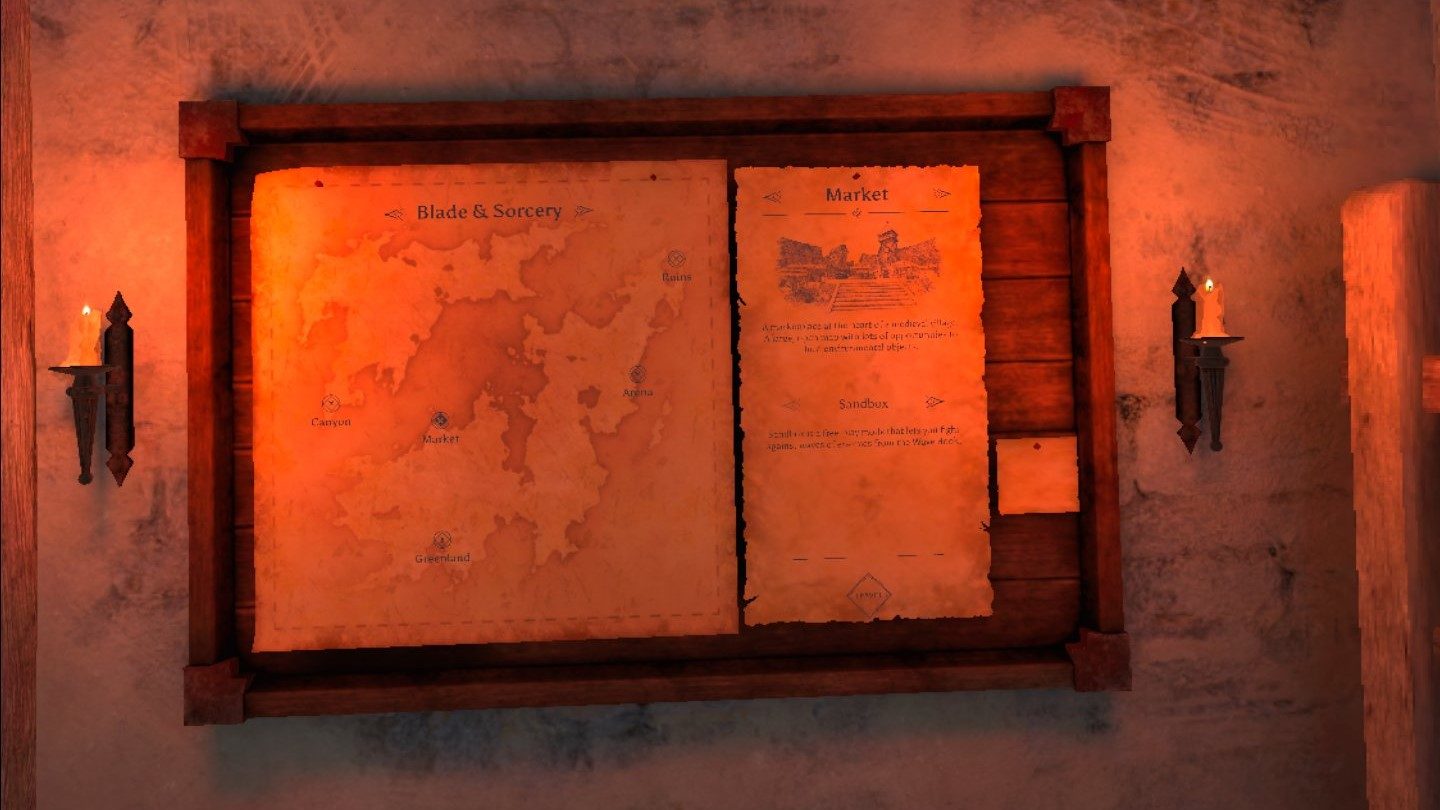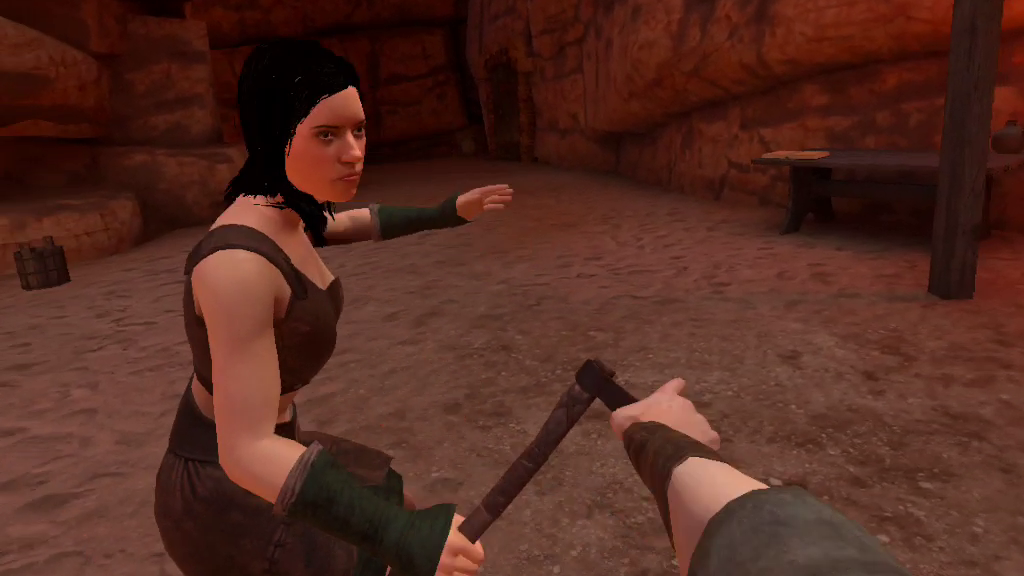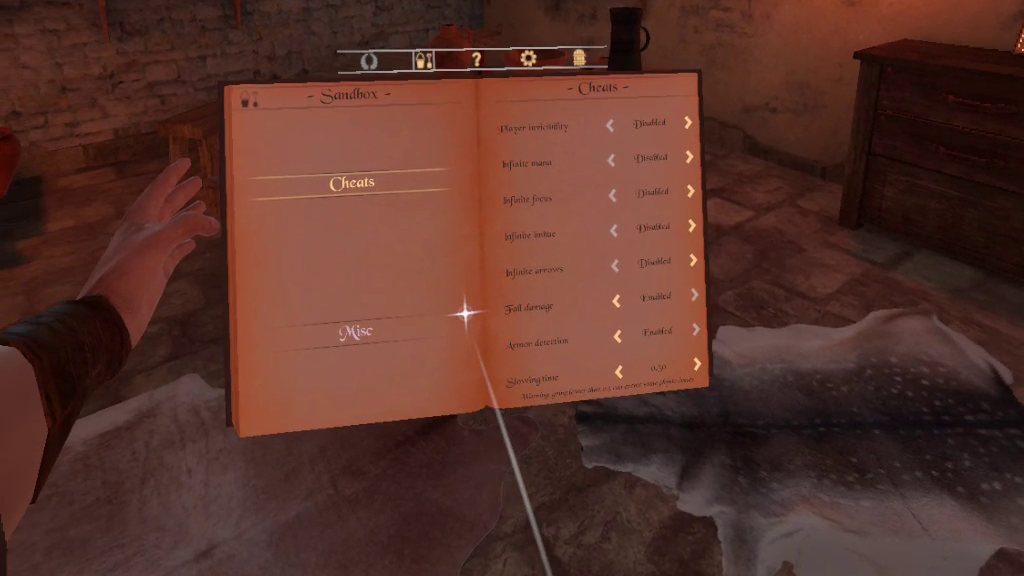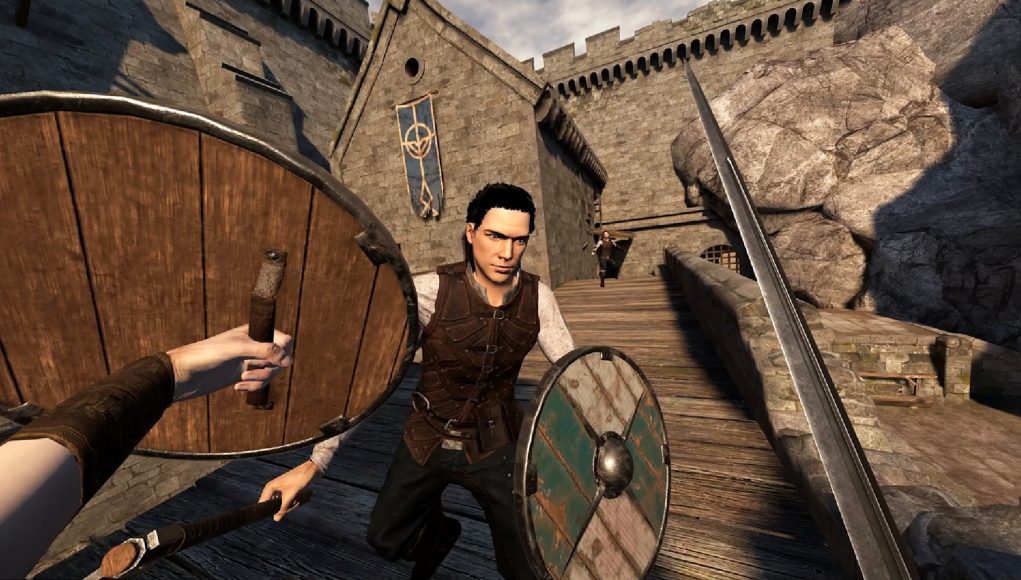Blade & Sorcery: Nomad almost feels like a work of digital wizardry, as it brings a standalone version of the hit physics-based combat sandbox exclusively to Quest 2 for the first time. Although it doesn’t feel as visually visceral as its bigger brother for PC VR headsets, which is notably still in Early Access, it serves up mostly the same physics-based carnage that will very likely bust some TVs in the process.
Blade & Sorcery: Nomad Details:
Available On: Oculus Quest 2
Release Date: November 4th, 2021
Price: $20
Developer: Warpfrog
Gameplay
Like the separate PC VR title, Blade & Sorcery: Nomad is all about making your own fun by challenging yourself against baddies clad in various armors and wielding all of the weapons provided within the game. This single-player title offers no story, and no progression system to speak of, which I always thought was a bit of shame considering how much fun the game’s physics-based engine offers. As it is, Blade & Sorcery: Nomad does exactly what it says on the tin: it provides a multitude of interesting places to engage in medieval-style combat against waves of enemies. Full stop.
As the name suggests, you’ll be able to equip yourself with basically any edged weapon in existence, and also three magic spells to choose from on the fly. The game’s physics-based melee and range weapons are pretty self-explanatory; each of them is weighted differently to simulate the items individual heft.
Magic, on the other hand, can be used directly as an offensive measure, allowing you to shoot fireballs, expel energy arcs from your hands to electrocute, and summon gravity wells that throw everything into the air. Alternatively, you can also enchant your weapons with each spell by rubbing your hands over it.
The most important bit though undoubtedly is the game’s ‘bullet time’ function, which lets you temporarily slow down time and dispatch multiple foes with the sort of cinematic style you’ve probably seen in gifs and YouTube videos over the past few years.
The clip below is only a taste of the bloody and gruesome ways you can kill an enemy. For me, Blade & Sorcery: Nomad still feels very much in the realm of cartoon violence though, and the game’s enemies act more like dummies with scripted movements than human beings imbued with all of the qualities of a sentient person.
Enemies topple over at the slightest push and don’t really put up a formidable fight, however I can understand if some may think it too far afield on the spectrum of hyperviolence to truly get into.
Just like zombies though, a gang of the scripted dummies (they do feel quite dumb) can overwhelm you and end your run, be it it one of the wave-based arenas or procedurally-generated areas that you can warp to from the safety of your home base.

Immersion
For me, all purely physics-based VR games have a difficult time eliminating all wonky collision-type behaviors, and Blade & Sorcery: Nomad is no exception. It simply comes part and parcel with having objects that have variable weights, colliders enabled, and follow the laws of physics. While the various range of hard and soft materials react more or less like you’d expect, there is still some unavoidable jank that you may have to ignore so you can have those cinematic moments everyone in VR has likely seen before.
That said, I’m not an avid player of the PC VR version of Blade & Sorcery—I haven’t modded it or played for more than a few hours—but I can still confidently say its amazing how much of the PC game the developers were able to get onto Quest 2’s humble Snapdragon XR2 chipset. Blade & Sorcery: Nomad performs reliably enough to feel almost like playing the vanilla, unmodded version on PC back when it first launched on Steam Early Access in 2018. It lacks a level of visual acuity (dynamic lighting, higher-res textures, etc), although that’s pretty forgivable considering the circumstances.

Nomad is also supposed to allow mods at some point too, which I expect will make things suitably gruesome, weird, and provide all sorts of opportunities for differing flavors of carnage.
The amount of options available for the standard game on Quest 2 is pretty mind-boggling as is. It offers a load of the standard cheats like invincibly, and toggle various options that will allow you to do things like tone down violence by turning off dismemberment, blood sprays, blood on characters, or blood on weapons.

Procedurally-generated environments seem to offer just enough content variation to keep you coming back, although I honestly got bored of the sandbox-style one-track killing after a few hours of playing. The game’s Dungeons update which came to the PC VR game in October is mostly here for Nomad, although the object-based ‘crystal hunt’ gameplay mode is said to arrive sometime in 2022.
Comfort
There are a host of options to keep you feeling mostly comfortable, although there are a few things to watch out for. Virtual jumping in VR has always been a bit stomach-turning for many, although activating the slow-mo button helps mitigate this, as it makes take-offs and landings much less abrupt.
You may also easily fall into the habit of playing it like a flatscreen shooter by over relying on strafing to dodge attacks. Forcing yourself to play standing and intentionally using your full room-scale area can help.
Check out the full swath of comfort options below to get a good idea of what toggles to expect.
‘Blade & Sorcery: Nomad’ Comfort Settings – November 4th, 2021 |
|
Turning |
|
| Artificial turning | ✔ |
| Smooth-turn | ✔ |
| Adjustable speed | ✔ |
| Snap-turn | ✔ |
| Adjustable increments | ✔ |
Movement |
|
| Artificial movement | ✔ |
| Smooth-move | ✔ |
| Adjustable speed | n/a |
| Teleport-move | ✖ |
| Blinders | ✖ |
| Adjustable strength | n/a |
| Head-based | ✔ |
| Controller-based | ✔ |
| Swappable movement hand | ✔ |
Posture |
|
| Standing mode | ✔ |
| Seated mode | ✔ |
| Artificial crouch | n/a |
| Real crouch | ✔ |
Accessibility |
|
| Subtitles | ✖ |
| Languages | English |
| Alternate audio | ✖ |
| Languages | n/a |
| Adjustable difficulty | ✔ |
| Two hands required | ✔ |
| Real crouch required | ✖ |
| Hearing required | ✖ |
| Adjustable player height | ✔ |







